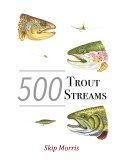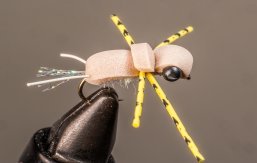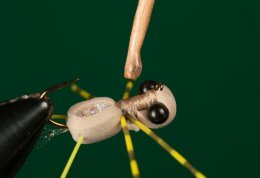Third Thursday Flies
12. Morris Minnow
with Skip Morris
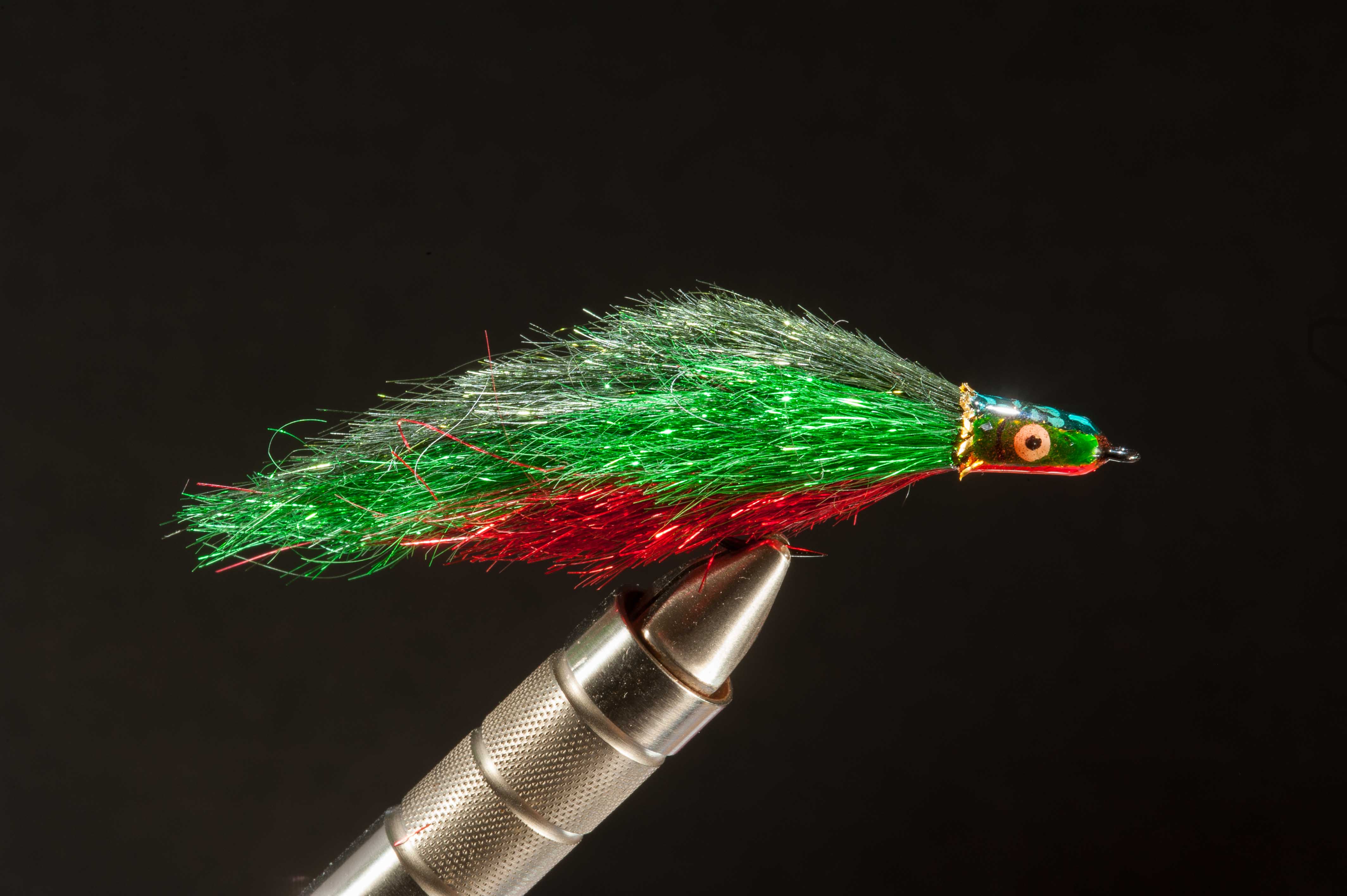 Morris Minnow
Morris Minnow
(Photo © Carol Ann Morris)
I liked and disliked my Morris Minnow from its earliest stages. I liked it for its fish form and its supple fish movements in water. I liked the distinct irises and pupils of its eyes. But it was just too flashy, too . . . chromey. Too chromey for me, that is—the stream trout I showed it to kept loving its dazzling self. Or, rather, the big trout in those streams did. Once a few big trout had expressed that love by grabbing the Minnow, my dislike for the fly began rapidly dissolving.
Over the past fifteen years or so, nearly all my biggest stream-caught trout—the three-, four-, six-pounders, even a ten-pound wild rainbow—have taken my Minnow.
Other fishes take it too. Largemouth bass take it snaked through the lily pads or well sunken out deep where the pads stop or teased in the shade of floating or submerged logs. I tie it smaller, even tiny, for crappies and bluegills and pumkinseed sunfish. (For largemouths and panfishes I tie it in sort of Clouser Minnow style, with metal barbell eyes bound on top to flip its hook upside down and reduce snagging.) I tie it only somewhat small for saltwater sea-run cutthroat trout and large for coho salmon.
So far, in the aquarium-clear smallmouth streams I fish, it's been only a so-so producer. I do wonder if it would be a smallmouth killer in tinted streams. It's been poor in most trout lakes—there must be something about the currents of streams, even light currents, that makes the Morris Minnow almost deadly on the trout that inhabit them. This confounds me: how can a fly be so effective in clear water moving slowly—water almost still—yet mostly fail in water also clear but actually still? Such a fine distinction in water types, yet such a dramatic difference in how their trout respond . . .
Perhaps thirty, forty years ago it would have been, but today the Morris Minnow really isn't all that unusual a fly in its construction. Heavy not-lead wire up front for a head-dipping swimming action: normal. A body constructed in sections: normal-ish. A head built up and painted realistically and coated with clear finish: well, close enough to normal for a contemporary streamer. More than all else, it's the brilliance of its body of ribbons of Mylar, supple and fine, waving with the flowing water, flashing sunlight, that makes this fly unique.
I tried the Minnow, an early version, in a huge Oregon spring creek swollen with rain, while fishing from a driftboat, and hooked then landed a five-pound wild rainbow. I took the fly, still in early development, to a river in Alaska where a rainbow shot up to slam it, slashing the current-lined surface of the water, and quickly forced me to race downstream to save the last of my backing. The trout eventually came to net bright-sided and fattened from a diet of ragged flesh from the spawned-out broken-down bodies of dead salmon. He was a true rainbow, my sharp and knowledgeable guide Patricia Edel assured me, based on a scientific study of the river's trout, and was not a sea-running steelhead. He weighed, Patricia and I estimated, about ten pounds.
That did it for me. For a time I still flinched when I tied the glaring thing on but did tie it on and did fish it whenever I felt a big trout might be near. Often enough, over these years, one has been there and has taken my Minnow, and taken an alarming length of backing out with it.
Morris Minnow, Brookie Skip Morris
- HOOK: Heavy wire, 2X or 3X long, ring (straight) eye, sizes 12 to 2
- THREAD: Dark- or medium-green 6/0 or 3/0
- WEIGHT: Lead-substitute wire wound from the center of the shank to a bit short of the eye
- BODY: Fine Mylar ribbon (Angel Hair, Lite Bright . . .). Bind the Mylar up the shank in sections. Along the sides goes the medium-green Mylar, along the underside is red or orange, down the back is dark-green
- HEAD: Rabbit dubbing (for bulk, medium- or dark-green or orange or red. Any color can work) covering the lead-sub wire. Build the last section of Mylar over the dubbing. Cover the whole head area with the working thread. (Alternate for big hooks: woven gold or bronze Mylar piping bound at the eye, pushed back to inside out, trimmed to head length. Paint the head as follows: dark-green top, medium-green sides, red or orange underside (whichever matches the Mylar underside), white eyes with black pupils, red or black gill slits, light-green squiggles over the back. Kids' nontoxic paints do a fine job. Coat the whole head with UV coating or epoxy glue (an epoxy with no or very low odors—they're from bad chemicals—and work outside in a cross-breeze so you don't breathe them)
- COMMENTS: Though this particular version imitates a brook trout (a "brookie"), I've tied the Morris Minnow in cutthroat, brown, and rainbow trout colors and all have caught me trout. Color doesn't always matter, but if browns are the only trout in the stream you're fishing, doesn't fishing a brown-trout Morris Minnow only make sense?
Click here to hear Skip's interviews on popular podcasts...
*Announcements*
Skip has an essay in Big Sky Journal's annual Fly Fishing issue, called "Montana Hoppers: the Princess and the Brute" released February 1, 2023. Skip rewrote it a bit; I painted and illustrated it here, on our website. Here's the link on our web page to check it out:
Click here to read Skip's essay Montana Hoppers: The Princess and the Brute...
Skip's latest books:
Top 12 Dry Flies for Trout Streams: How, When, and Where to Fish Them, is now available on Amazon as an ebook...check it out! Click on the links below to go to the information page on Top 12 Dry Flies (the link to Amazon is at the bottom of the page...)
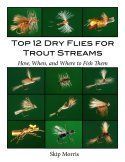 Top 12 Dry Flies for Trout Streams: How, When, and Where to Fish Them
Top 12 Dry Flies for Trout Streams: How, When, and Where to Fish Them
Click here to get more information about
Top 12 Dry Flies for Trout Streams: How, When, and Where to Fish Them (the link to Amazon is at the bottom of the page)...
Top 12 Dry Flies for Trout Streams: How, When, and Where to Fish Them (the link to Amazon is at the bottom of the page)...
Top 12 Nymphs for Trout Streams: How, When, and Where to Fish Them, 2nd Edition, originally published as an e-book only, is now available on Amazon as a paperback...check it out! Click on the links below to go to the information page on Top 12 Nymphs (the link to Amazon is at the bottom of the page...)
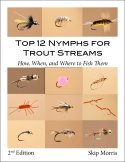 Top 12 Nymphs for Trout Streams: How, When, and Where to Fish Them (2nd Edition)
Top 12 Nymphs for Trout Streams: How, When, and Where to Fish Them (2nd Edition)
Click here to get more information about
Top 12 Nymphs for Trout Streams: How, When, and Where to Fish Them (2nd Edition). . .
Top 12 Nymphs for Trout Streams: How, When, and Where to Fish Them (2nd Edition). . .
Click here to get more information about Skip's e-book,
500 Trout Streams...
500 Trout Streams...
Skip's latest paperback book:
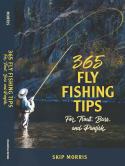 365 Fly Fishing Tips for Trout, Bass, and Panfish
365 Fly Fishing Tips for Trout, Bass, and Panfish
Click here to get more information about Skip's latest book,
365 Tips for Trout, Bass, and Panfish...
365 Tips for Trout, Bass, and Panfish...
Print Skip's chart for FREE:
Skip Morris's Trout-Fly Proportion Chart
Go to Skip Morris's Trout Fly Proportion Chart
Skip's Predator is available to buy...
Skip's ultra-popular Predator—a hit fly for bluegills and other panfishes and largemouth bass (also catches smallmouth bass and trout)—is being tied commercially by the Solitude Fly Company.
The Predator
CLICK HERE to learn more about or to purchase the Predator...
Learn to Tie Skip's Predator
Do you want to tie the Predator?
Tying the Predator
Skip shows you how to tie it on his YouTube Channel link, listed below:
CLICK HERE to see Skip's detailed video on how to tie the Predator...






